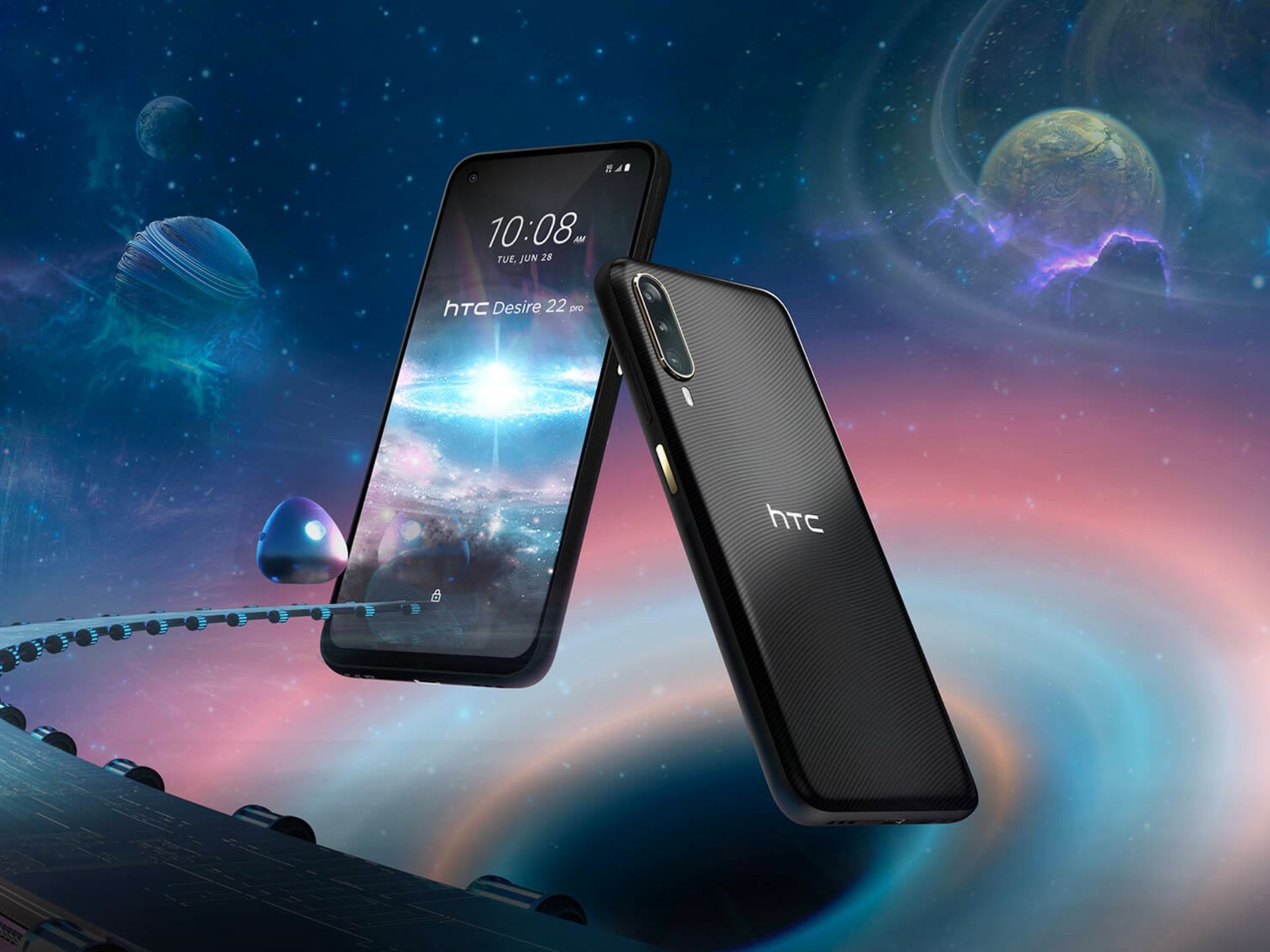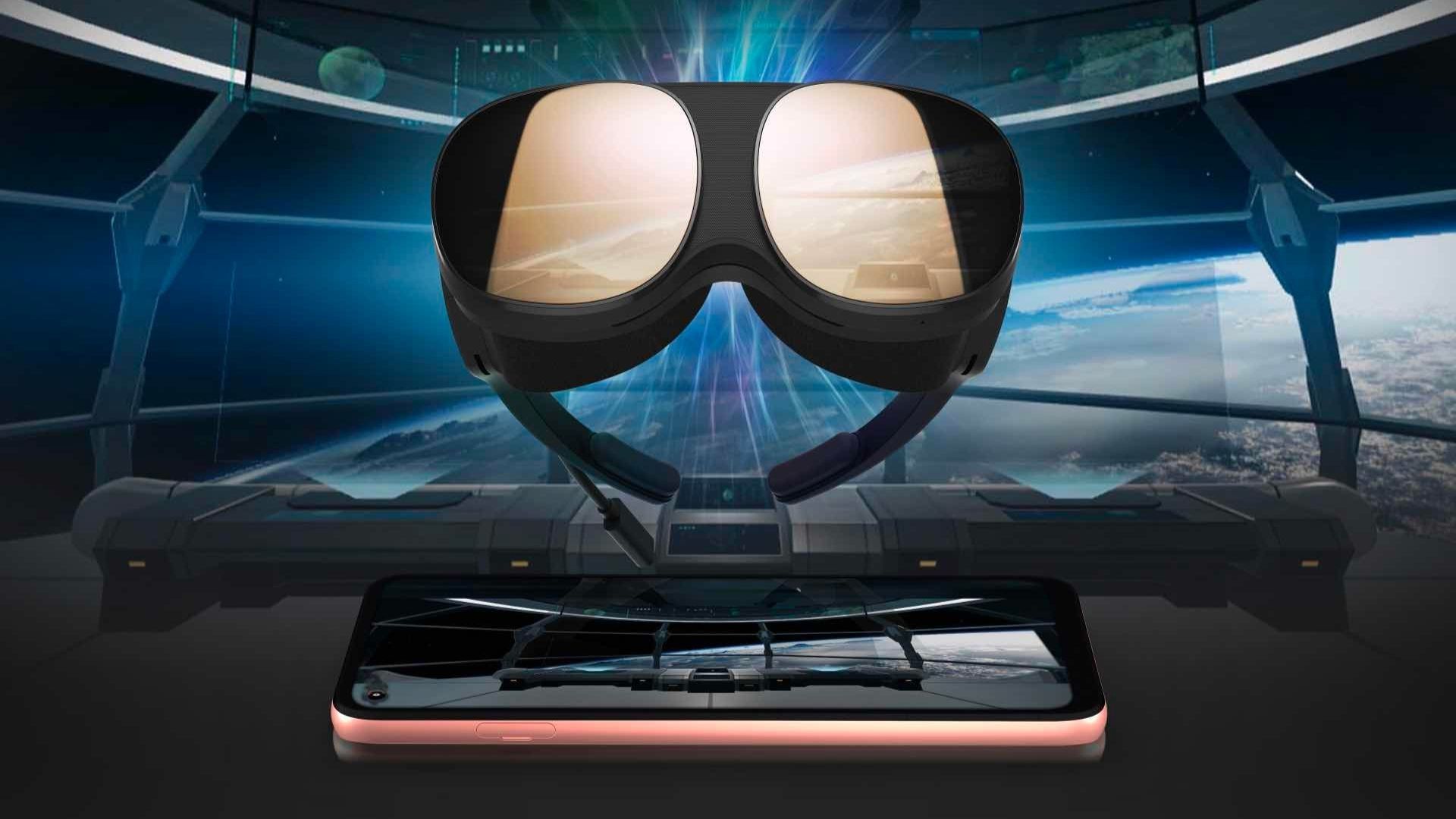We previously mentioned that HTC was planning on announcing a new smartphone, and leaks indicated that it would be built around virtual reality and the recently unveiled HTC Vive Flow VR headset. Today, the Taiwanese smartphone maker unveiled the new HTC Desire 22 Pro. It’s a mid-range device with a primary focus on virtual reality.
The HTC Desire 22 Pro packs a 6.6-inch, 1080 x 2412, IPS LCD display with 120Hz refresh rate. It has a hole-punch cutout on the top left for the 32MP camera, and it’s powered by a Snapdragon 695 5G chipset. It has 8GB of memory and 128GB of expandable storage.
There are three cameras on the back, including a 64MP f/1.8 primary sensor, a 13MP f/2.4 ultrawide, and a 5MP f/2.4 depth camera. There’s also a side-mounted fingerprint sensor, and the phone has IP67 certificate against water and dust. It’s running Android 12 out of the box.
https://twitter.com/htc/status/1541678095870164995
HTC Desire 22 Pro has a 4,520 mAh battery, and it supports 18W wired charging; wireless charging and reverse wireless charging are also available. The phone comes in two colors, Wave Gold, and Starry Night Black. The device will retail for TWD 11,990 (~$404) in Taiwan and £399, €459 in Europe. Sales will start on July 1 in Taiwan, and Europeans can already pre-order it today. The phone will become available from August 1.
HTC is going all-in on VR
The highlight of the show is the fact that the phone can be paired with a VIVE Flow VR headset, letting users be immersed in virtual reality. Metaverse has been the main talking point in recent months, and HTC appears to be going all-in on the technology, shifting its focus from its unprofitable smartphone business.
Unsurprisingly, the HTC Desire 22 Pro also comes pre-installed with the Viverse Wallet, letting users manage their digital assets, such as cryptocurrencies and NFTs. If you’re into VR and crypto, this phone is likely aimed at you, but we have a few concerns about the power of this device, which brings us to the next point.
Why develop a mid-ranger smartphone that focuses on VR content?
HTC Vive Flow VR headset and HTC Desire 22 Pro
Source: HTC
The Qualcomm Snapdragon 695 5G chipset is based on the 6nm technology and it’s a capable SoC, but it’s not as powerful as the Snapdragon 8 Gen 1 or the recently announced Snapdragon 8 Plus Gen 1 chipset. It doesn’t make much sense why HTC would equip a VR-oriented device with a mid-range chip, unless it wanted to create an affordable approach for users to get into the VR world.
Still, most people either buy flagship devices, or mid-rangers to save money. While the HTC Desire 22 Pro is an excellent mid-ranger for the money, it’s unlikely to convince people to buy into the Metaverse promise. HTC lost its status in Europe, and while there are still a lot of people who love the company, most retailers aren’t selling HTC devices in their stores, and many have even forgotten about it.
The idea of a VR-focused smartphone isn’t unheard of, and some companies have tried persuading people that it’ll be the next big thing, but they all failed. Smartphones are powerful, but they are far from being able to play AAA desktop titles. VR headsets require beefy computer components and high-end graphics cards to power two high-resolution displays with minimal latency. Samsung, Facebook (Meta) and Google tried to make special VR headsets a thing on mobile, but they were quickly discontinued after just a few years.
HTC may want to re-enter the market and stay relevant in 2022, but announcing a smartphone solely focusing on VR makes little sense as things stand now. I’m not sold on the idea of playing VR games on my phone, and I refuse to believe that a smartphone powering a $499 VR headset could change my mind. My take is that If you already have a decent gaming setup, you might as well just spend the $999 on a full-fledged HTC Vive, or Steam Valve Index setup with motion sensors and controllers.


